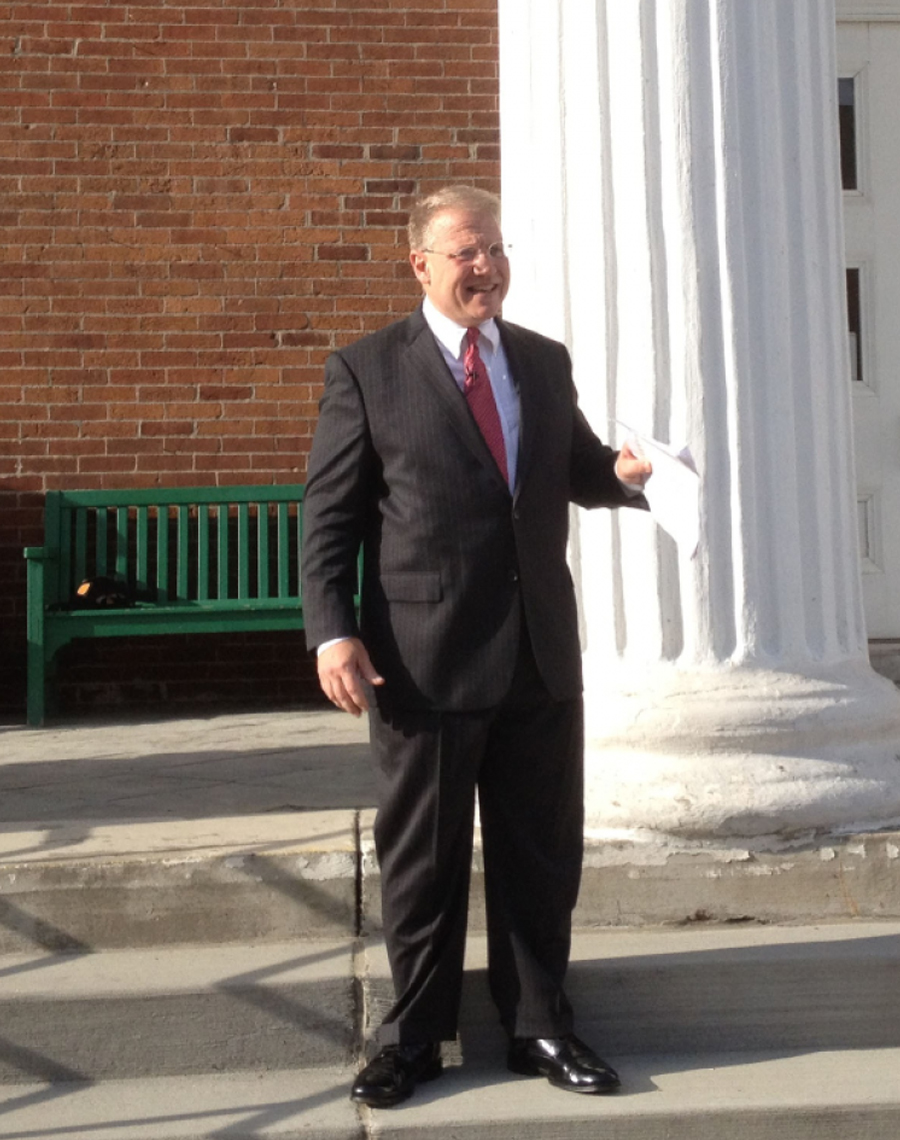
Stratton Delivers Flag Day Address
Dr. Lawrence M. Stratton, Director of Waynesburg University’s Stover Center for Constitutional Studies and Moral Leadership and Assistant Professor of Ethics and Constitutional Law, presented the Greene County Flag Day speech “Participating in Old Glory’s Reality” on the Greene County Courthouse steps Thursday June 14, 2012. The event was sponsored by the Greene County Chapter of the Sons of the American Revolution. Dr. Stratton was introduced by Greene County Court of Common Pleas Judge Farley Toothman.
Stratton recounted the history of the American flag going back in time to the Second Continental Congress’s Flag Resolution, passed June 14, 1777 which resolved that “The flag of the United States [shall] be thirteen stripes, alternate red and white; that the union be thirteen stars, white in a blue field, representing a new Constellation.” He also described the debate over Philadelphia seamstress Betsy Ross’s role in making the flag involving a visit from George Washington, financier Robert Morris, and George Ross representing the Continental Congress and her own proposal for 5-point stars in a circle.
Noting that the Ross story is disputed among some historians, Stratton drew upon University of Massachusetts at Amherst historian Marla R. Miller’s 2010 book, Betsy Ross and the Making of America, in which Miller acknowledged gaps in the Betsy Ross story, but noted that Ross was an entrepreneurial woman who did make flags for a living during that period in Philadelphia, and in fact, received a payment of 14 pounds from the Pennsylvania Navy Board on May 29, 1777 for “making ship’s colours”—two weeks before Congress’s flag resolution. Stratton recounted that Professor Miller stresses that Betsy Ross is historically important because “she was a young craftswoman who embraced the resistance movement with vigor” and along with other patriots “challenged their government when they believed it had transgressed its bounds.”
Interpreting the flag in the context of theologian Paul Tillich’s view “that a symbol participates in the reality to which it points,” Stratton said that the American flag participated in the reality and symbolized the Declaration of Independence and the Revolutionary War’s quest to end English tyranny. When the victorious Americans instituted their new government, Stratton said, “the flag amplified its symbolic authority” with the U.S. Constitution’s checks and balances and the Bill of Rights in order “to prevent the new government from following in King George III’s tyrannical footsteps.”
Recalling “Star-Spangled Banner” flying over Fort McHenry during the War of 1812, Barbara Frietchie’s defiant flying of the American flag over marching Confederate troops during the Civil War, John Phillip Sousa’s 1897 march, the “Stars and Stripes Forever,” the marines who hoisted the American flag who are honored at the Iwo Jima Marine Memorial, American flags honoring deceased veterans in cemeteries around the world, the American astronauts who placed the American flag on the moon, and the firefighters who elevated the flag over the ruins of New York City’s World Trade Center after the “9/11” 2001 terrorist attacks, Stratton noted that every American “could add multiple examples of how the American flag has provided us direction and hope.”
He concluded, saying, “As we honor the American flag—the Stars and Stripes—let us participate in the reality to which Old Glory points as we seek to realize the promises of America anew!”
